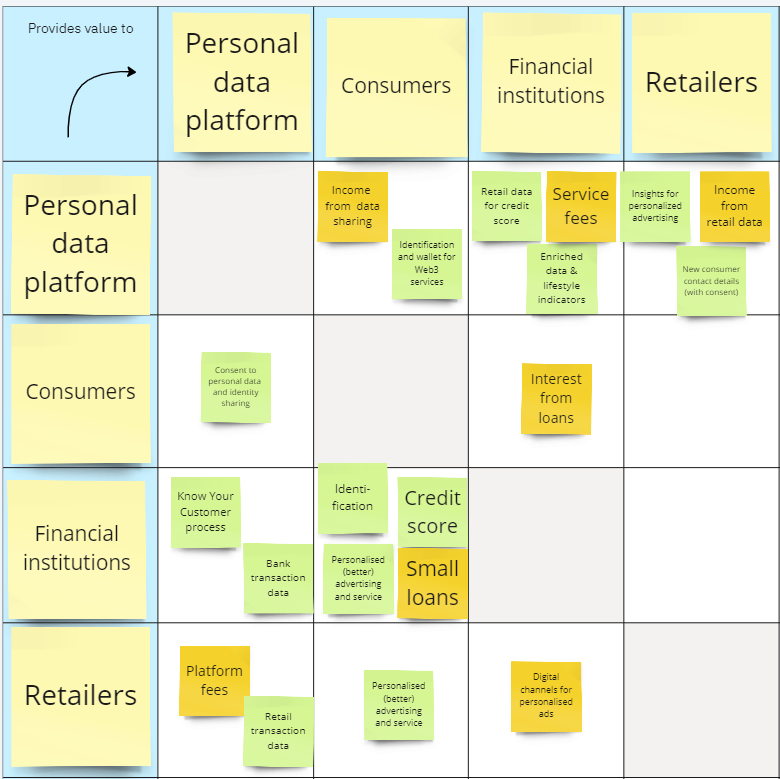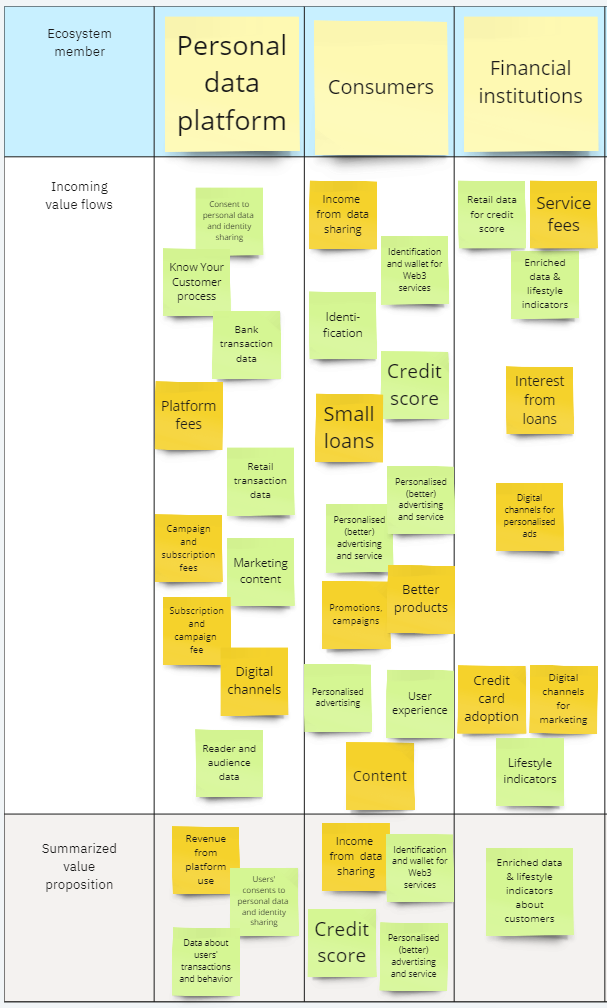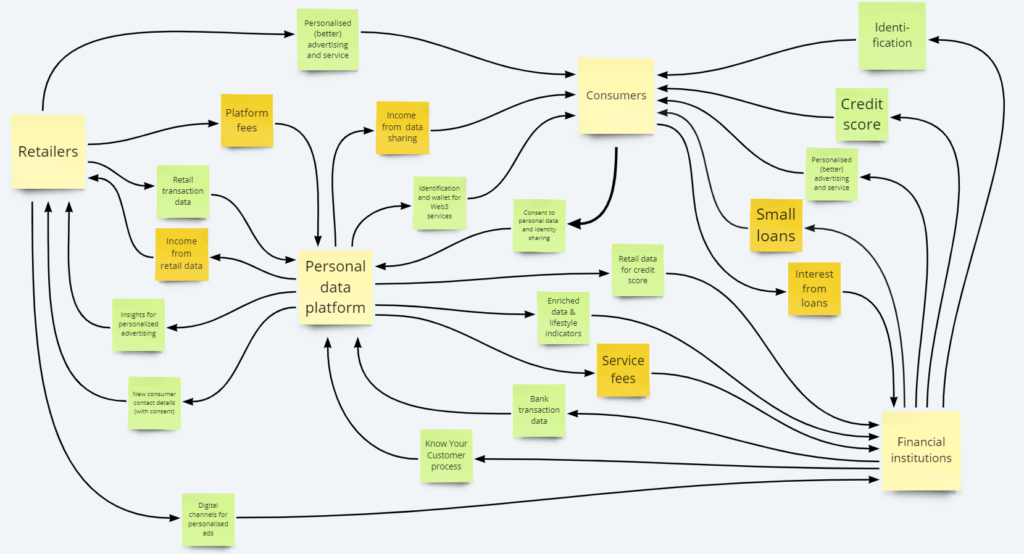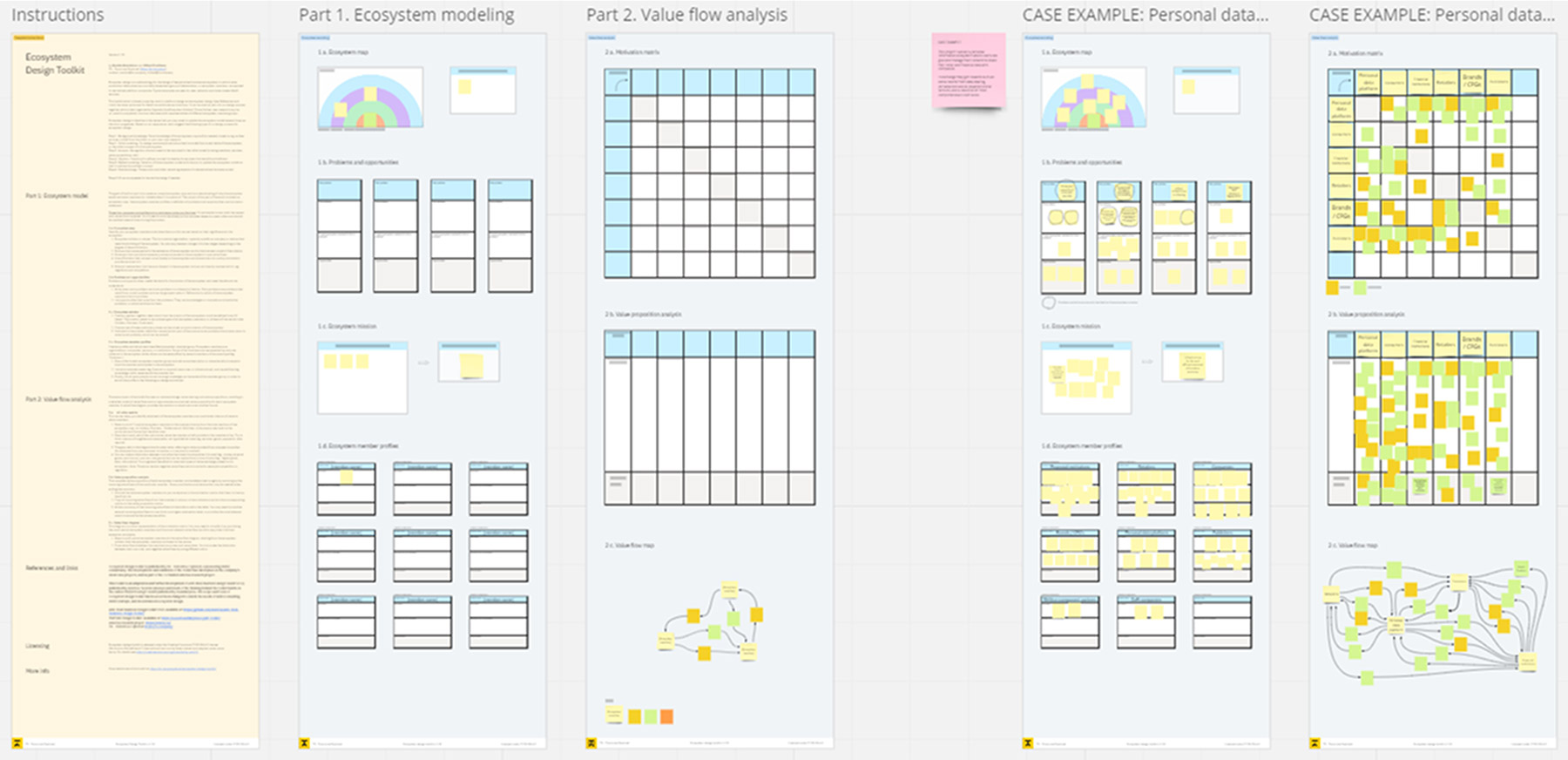Ecosystem modeling instructions
Watch the video below to get a full tour of each tool, including an example of the case study included in the toolkit. You can also read the instructions for each tool separately.
1. Motivation matrix
The motivation matrix canvas helps to identify how each ecosystem member contributes to another member. Try to select members only from the most central sections of the ecosystem map, the initiator, partners and collaborators.
As you will notice later, each new member will make the ecosystem’s value flow mapping much more complex.
- First, select up to six or seven central ecosystem members for analysis. Add them in the same order in both the horizontal and vertical headline rows.
- Describe in each cell of the matrix what value a member on the left provides to a member at the top. Try to think in terms of tangible and measurable value, not only hypothetical value. These could include things like services, goods, data, tools, and knowledge.
- The gray cells in the diagonal are for peer value, referring to value provided from one peer to another. For example, one consumer to another or one retailer to another. In your case, these might remain empty.
You can also make a distinction between rival and non-rival goods. Rival goods lose value when used, like money, physical items or work hours. Non-rival goods can be used without a loss of value, like digital goods, data or information. To put it more tangibly, a rival good can be a piece of cake. Once eaten, nobody else gets to have it. A non-rival good could be sharing the recipe for the cake so others may also make and enjoy a tasty piece of cake.
You can add negative value flows, which involve, for example, competition or regulation.

2. Value proposition analysis
The complete value proposition analysis can be determined roughly by summing up the incoming value flows for each ecosystem member. You may have to prioritize or abstract information when writing a summary for each member.
- Fill the analysis table using the same ecosystem members from the previous motivation matrix. Add those members to the top headline row.
- Copy all the incoming value flows from that member’s column into the motivation matrix to the corresponding column in the value proposition matrix.
- Write brief summaries in the final row about the incoming value flows for each ecosystem member. You may need to combine several incoming value flows into one, think on a higher abstraction level, or prioritize the most relevant flows to be able to summarize the value proposition.

3. Value flow diagram
The value flow diagram is a visual representation of the motivation matrix. You may need to simplify the matrix by prioritizing the most central ecosystem members and the most relevant value flows to avoid drawing an excessively complex map.
- Select one to five key ecosystem members, starting from the ecosystem initiator. Add the ecosystem members as sticky notes on the canvas.
- Draw the value flows between the members as arrows and give them a name if necessary.
- You can also make the distinction between rival, non-rival and negative value flows by using different colors for the sticky notes.

